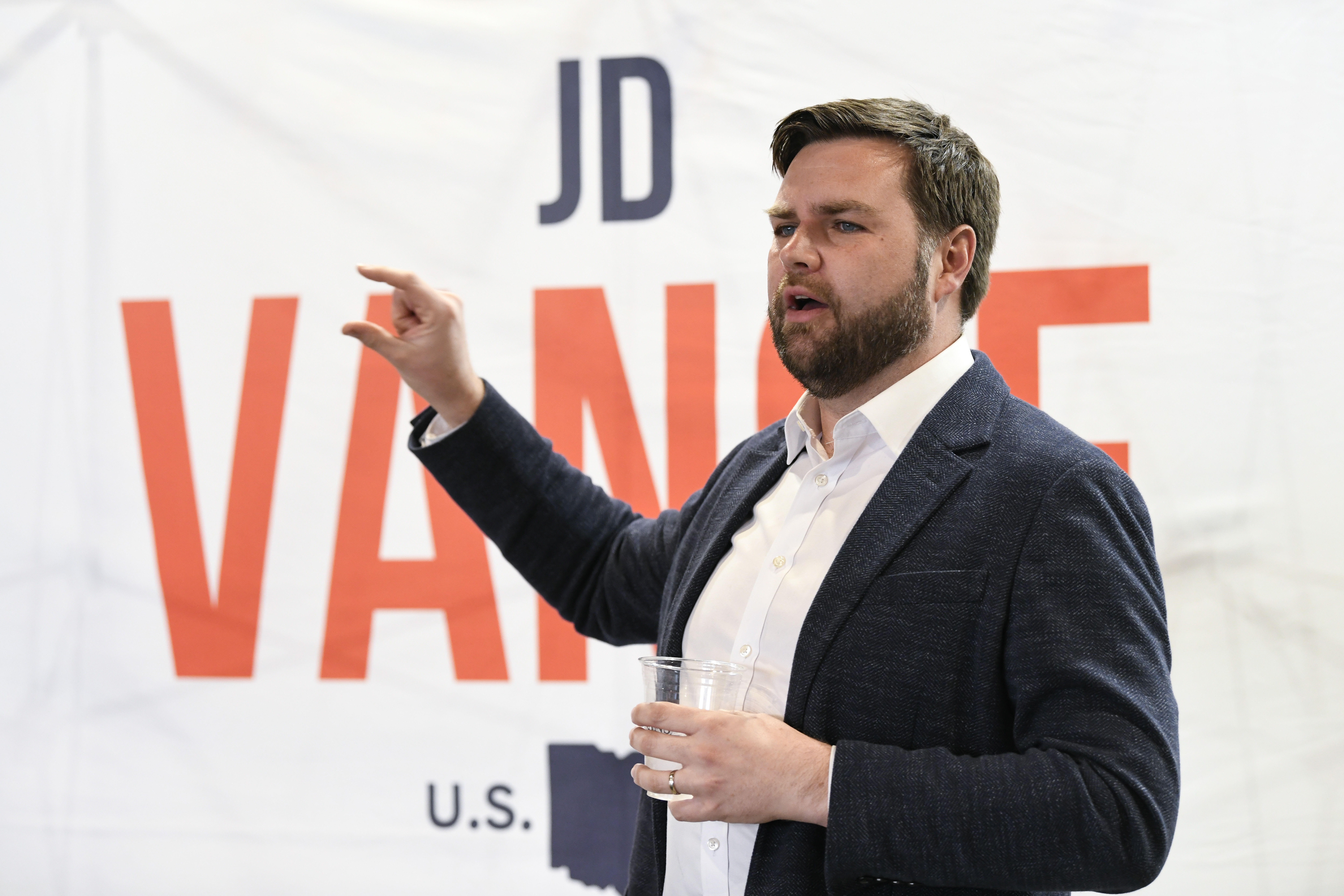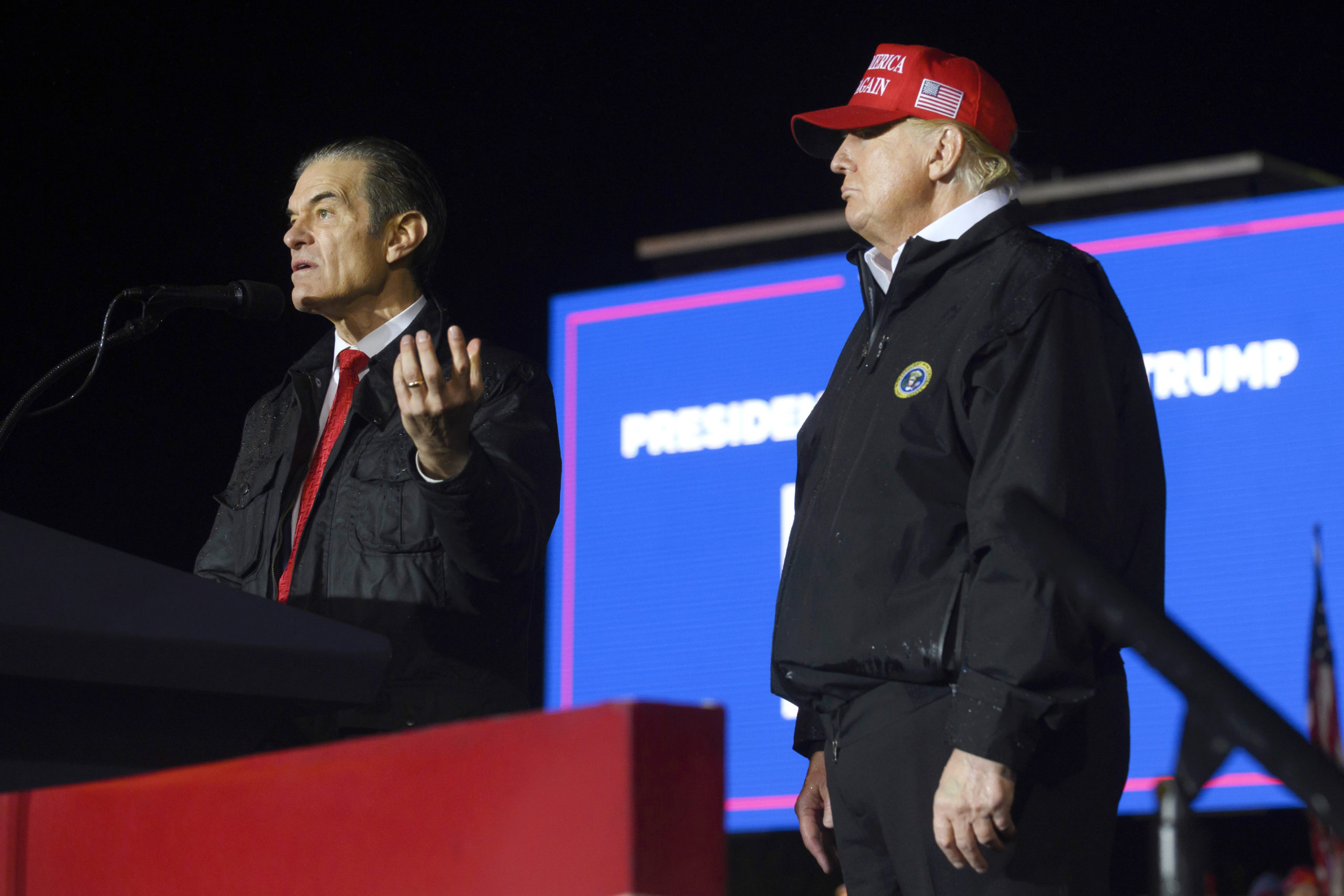Republican candidates in five of the most competitive Senate races are struggling to out-raise their Democratic opponents, suggesting that the GOP could squander an otherwise favorable midterm environment.
Elections analysts use in-state donations as a proxy for grassroots support and voter enthusiasm, and five GOP Senate nominees are struggling in that metric. Republicans are expected to take back the House of Representatives in November, but candidate recruitment and fundraising struggles could prevent them from gaining a seat in the evenly-split upper chamber. FiveThirtyEight’s Senate model favors Democrats to hold the Senate, with the most likely scenario another 50-50 split.
“Democrats are simply out-fundraising Republicans. They pioneered small-dollar donations online, and while Republicans have made efforts to catch up, it’s just still not on par. You have a more fired-up Democratic base, and a lot of that is the Dobbs decision,” Cook Political Report with Amy Walter Senate editor Jessica Taylor told the Daily Caller. “I think the most probable is a Democrat gain of zero or Republicans picking up two seats.”
Republican nominees in Ohio, Pennsylvania, Georgia, Nevada, and North Carolina have all raised less money than the Democrats they will run against, both in- and out-of-state. Democrats Tim Ryan of Ohio and John Fetterman of Pennsylvania have both raised more money in-state as a percentage of their donations overall than their opponents, J.D. Vance and Mehmet Oz, respectively.
GOP operatives have expressed repeated concern about Vance’s campaign in particular. The Hillbilly Elegy author has raised just under $1 million from Ohio residents, his second-quarter Federal Election Commission (FEC) filings show, compared to Ryan’s nearly $5.9 million in in-state donations. Overall, Vance has raised $3.5 million, while Ryan has raised $21.7 million.

TROY, OH – APRIL 11: U.S. Senate candidate JD Vance speaks with prospective voters on the campaign trail on April 11, 2022 in Troy, Ohio. Vance, a prominent author, announced his candidacy in July 2021 to replace retiring Sen. Robert Portman (R-OH). (Photo by Gaelen Morse/Getty Images)
Local Republicans have said that Vance has not maintained his profile within Ohio in the aftermath of his primary win. Buoyed by the endorsement of former President Donald Trump, Vance received 32% in a seven primary candidate field. Now, the former venture capitalist and bestselling author is “running the worst campaign that you could possibly run,” Youngstown talk radio host Ron Verb told The Daily Beast.
A person familiar with the Vance campaign’s finances downplayed concerns in Ohio and nationwide that Democrats are out-raising Republicans in key races. After clearing a threshold, campaigns face diminishing returns for each additional dollar raised, the person noted. No Republicans will struggle to reach that threshold in 2022, the person said, without identifying how much money candidates would need to raise to be competitive.
The campaign is focused on contacting voters and fundraising closer to the election, the person told the Daily Caller, leading to the perceived slow start. The person, given anonymity to discuss future events and projects, noted planned appearances with primary rivals Josh Mandel, Mike Gibbons, and Jane Timken.
Taylor emphasized that early spending allowed Ryan to reach voters before the Vance campaign could message against him. However, she added, the national environment and Ohio’s recent GOP trend mean that the seat is likely to stay in Republican hands.
“Ryan’s been able to be up on TV this summer and Vance only recently just went back up. That has allowed Ryan to define himself positively this summer. Vance had a bruising primary, Ryan didn’t really have one,” she explained.
“The environment is still a Republican environment. Ohio is a pretty red state, albeit a lighter shade of red.”
The Senate Leadership Fund, a Super PAC associated with McConnell, announced Thursday that it would spend $28 million on pro-Vance TV and radio ads. The Minority Leader expressed concern that the GOP might not take back the Senate in November, blaming candidate quality for the party’s struggles.
Although Pennsylvania Senate candidate Mehmet Oz has had more success than Vance raising funds from out-of-state donors, he has failed to clear $600,000 in in-state donations. Less than 3% of Oz’s total donations have come from Pennsylvanians, out of $19 million overall. In contrast, Fetterman has raised $3.2 million in-state, and $26 million overall. This race is the one “most likely to flip,” Taylor added.
Like Vance, Oz struggled to put away primary challengers David McCormick and Kathy Barnette, despite an endorsement from Trump. Oz garnered 31% support, defeating McCormick by fewer than 1,000 votes. After the primary, Oz reportedly decamped to Florida and Ireland for vacations, rather than fundraising and campaigning. (RELATED: Fight Over Pennsylvania GOP Primary Results Rages On)

GREENSBURG, PA – MAY 06: Pennsylvania Republican U.S. Senate candidate Dr. Mehmet Oz joins former President Donald Trump onstage during a rally in support of his campaign at the Westmoreland County Fairgrounds on May 6, 2022 in Greensburg, Pennsylvania. (Photo by Jeff Swensen/Getty Images)
The Fetterman campaign has repeatedly portrayed Oz as a carpetbagger, trolling him on Twitter and calling attention to his residence in northern New Jersey. Early polls have shown the attacks to be effective, with Fetterman leading Oz in polls by as many as nine points, even as a stroke has kept Fetterman off the campaign trail. A spokeswoman for the Oz campaign downplayed concerns about Fetterman’s messaging and Oz’s fundraising.
“Since Dr. Oz has been the official nominee he has been in every corner of the commonwealth and beyond making the case about how important it is to have the necessary resources to take on John Fetterman. People are chipping in via text messages, emails, events, calls, you name it. Pennsylvanians are coalescing around Dr. Oz when they hear the stark contrast between John Fetterman’s dangerous and radical ideology vs. Dr. Oz’s heart to be the voice for change in Washington,” the spokeswoman told the Daily Caller.
In Georgia, considered by some analysts the GOP’s strongest pickup opportunity, incumbent Democratic Sen. Raphael Warnock has raised nearly twice as much as challenger Herschel Walker, although the two have raised similar amounts in-state. Polls of the race consistently show Warnock leading by at least three points, even as incumbent Republican Gov. Brian Kemp leads challenger Stacey Abrams by four points in the RealClearPolitics average.
Another imperiled Democrat incumbent, Catherine Cortez Masto of Nevada, out-raised challenger Adam Laxalt both overall and in-state through the second quarter. Similarly, Cheri Beasley, a North Carolina state Supreme Court chief justice, is out-raising Republican Rep. Ted Budd overall and in-state. Beasley is running four points behind Budd for the seat vacated by retiring Republican Sen. Richard Burr, although recent polls show a tightening race.
The National Republican Senatorial Committee (NRSC), the GOP’s Senate campaign arm, has raised over $173 million, $10 million more than the Democratic Senatorial Campaign Committee. NRSC communications director Chris Hartline told the Daily Caller that the national arm expects to fill in the gaps in states like Pennsylvania and Ohio, where winning candidates were hamstrung by drawn-out primaries. (RELATED: Fight Over Pennsylvania GOP Primary Results Rages On)
“We’ve already been spending” in Pennsylvania and Ohio in “buys [that were] coordinated with the Oz and Vance campaigns,” Hartline said. “In both cases the fundraising has really started to pick up. Both campaigns will have the resources they need down the stretch.”
Hartline acknowledged that candidate fundraising has been a “mixed bag” so far, but that the GOP does not view this issue as candidate-specific.
“There have been challenges across the board for Republicans in terms of low-dollar fundraising, I think due to economic concerns,” he explained. “It’s not necessarily happening to one candidate versus another.”
“We’re doing everything we can to support our candidates,” Hartline added.